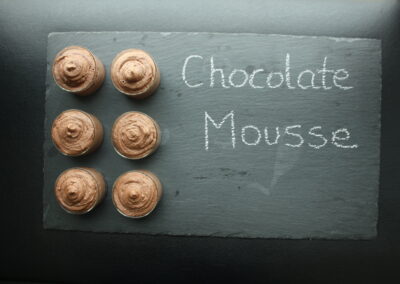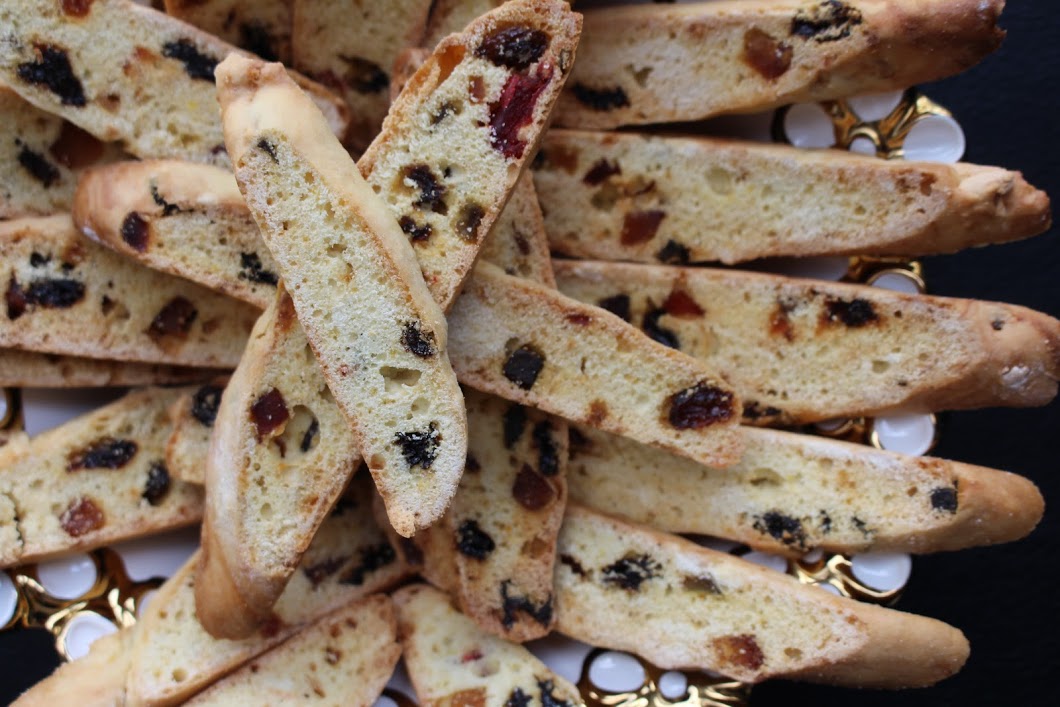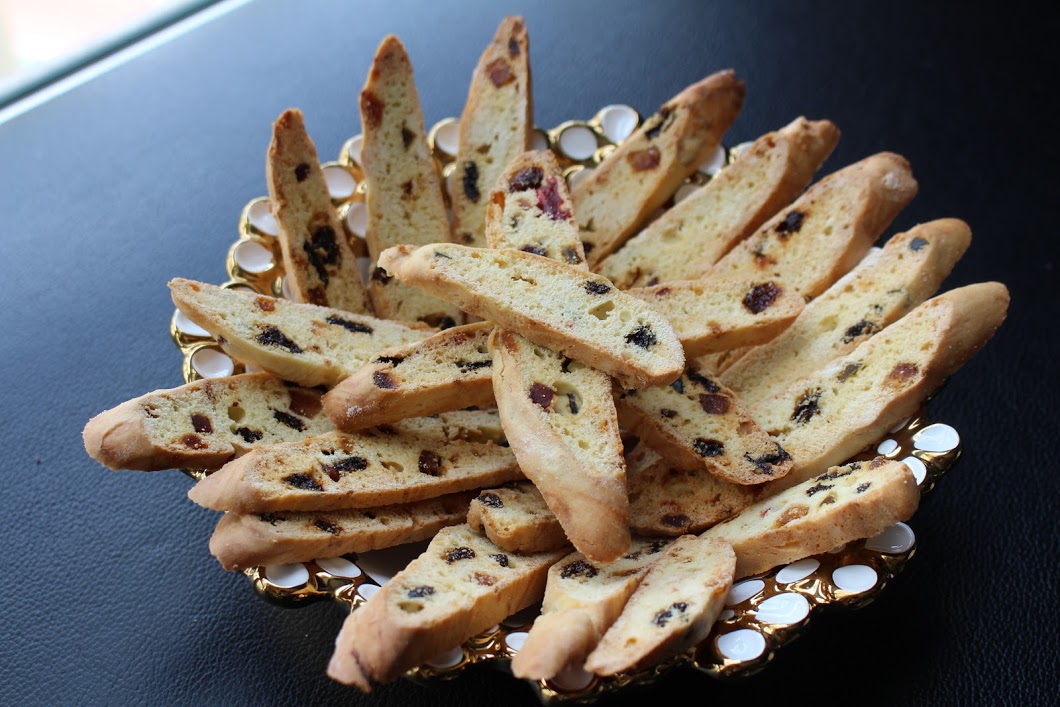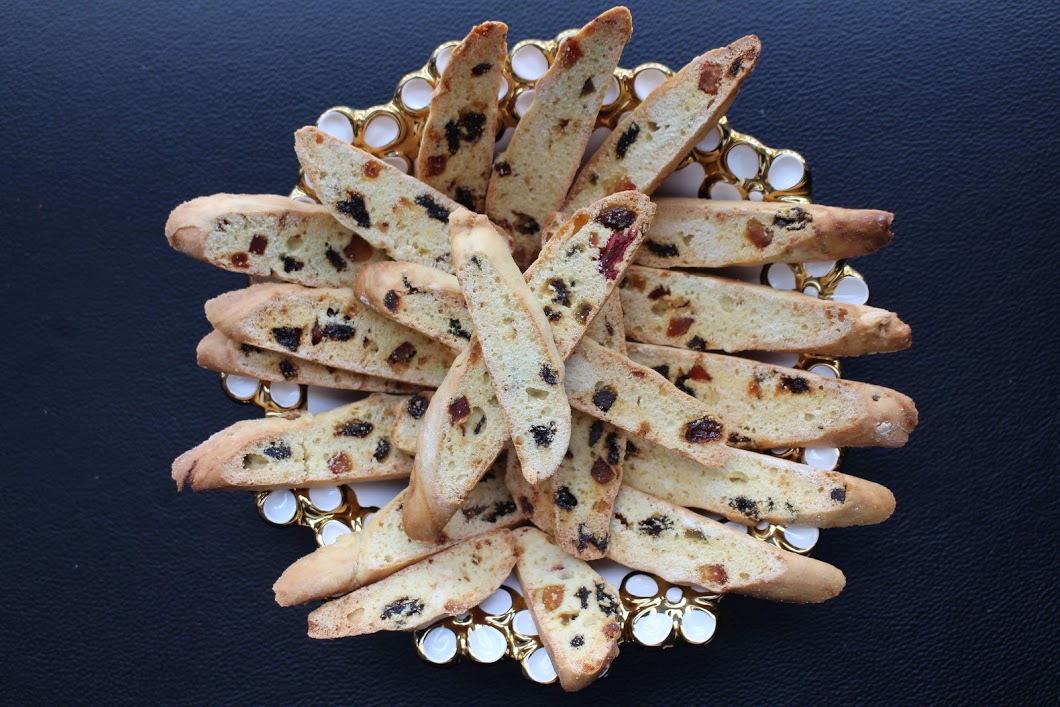Variation on the Nutty biscotti.


Another variation of the plain biscotti but this one is with the goodness of Dry Fruits!






Share
Variation on the Nutty biscotti.
Dietary Information
Nutritional Information
| Typical values* | per Serving | contents |
|---|---|---|
| Total Energy | 258 Kcal | |
| Protein | 9% | 24 Kcal |
| Fat | 10% | 29 Kcal |
| Carbohydrates | 81% | 209 Kcal |
Factoid
Biscotti known also as cantucci, are Italian almond biscuits that originated in the Tuscan city of Prato. They are twice-baked, oblong-shaped, dry, crunchy,and may be dipped in a drink, traditionally Vin Santo. Cantuccio is an old Italian word that literally means "little place", "nook", or "corner" but that, in the past, was also used to indicate a little piece of bread with a lot of crust (usually the first and last slices of the loaf, the "corners"). The word biscotto, used in modern Italian to refer to a biscuit (or cookie) of any kind, originates from the medieval Latin word biscoctus, meaning "twice-cooked". It characterised oven-baked goods that were baked twice, so they became very dry and could be stored for long periods of time. Such non-perishable food was particularly useful during journeys and wars, and twice-baked breads were a staple food of the Roman legions.
Video
0 Comments